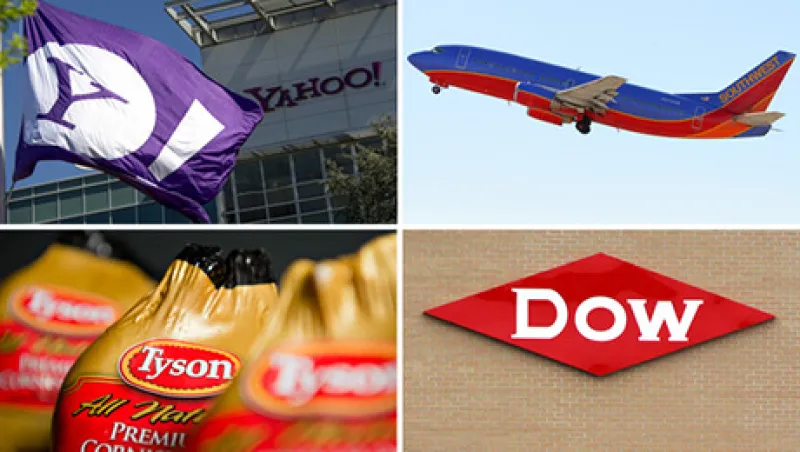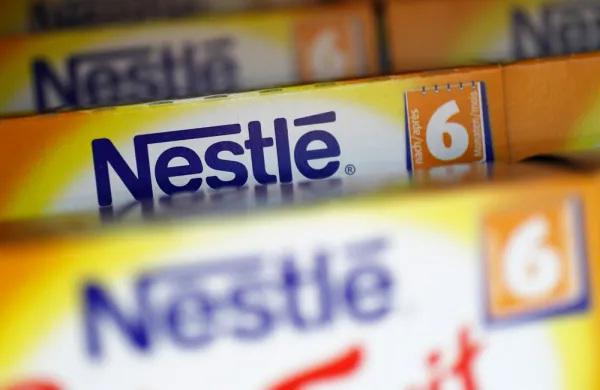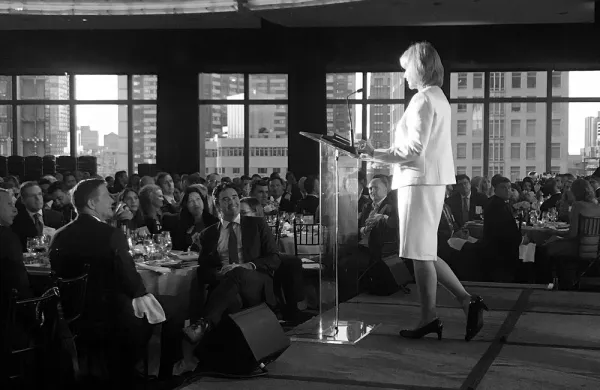Dow Chemical Co. warranted some praise when activist Daniel Loeb and his hedge fund firm, Third Point, bought a stake in January and demanded change. The reason: stock buybacks. In the current Corporate Buyback Scorecard, which encompasses eight quarters through the first quarter of 2014, the Midland, Michigan–based chemicals giant’s buyback return on investment topped those of all but seven S&P 500 companies that retired more than 4 percent of their market capitalizations.
Today, buybacks are fending off activists, fine-tuning end-of-quarter results and neutralizing stock-option dilution. Buyback ROI, designed and calculated for Institutional Investor by Fortuna Advisors, allows investors to measure and compare results of buyback programs. For any limited period a company’s buyback ROI bestows neither laurels nor indictment. You really need measurement over extended periods to understand buyback performance.
Buybacks keep coming despite rising stock prices. Analyst Stuart Kaiser and his colleagues at Goldman Sachs Group reported that the volume of stock buybacks at S&P 500 companies climbed 19 percent in 2013 and should rise 23 percent more this year, to $600 billion. Goldman says 85 percent of S&P 500 companies now engage in buybacks, which collectively scoop up 3 percent of market cap annually, twice the rate of a decade ago.
| Buyback Scorecard The S&P 500 as Stock Repurchasers Best and Worst Programs Industry Comparisons |
The current Corporate Buyback Scorecard uses rolling periods to allow companies to be compared across the same time periods, subjected to the same market forces. When the ROI of buybacks lags peers’ in multiple quarters, companies can’t hide the results. Fluctuations over different periods, says Fortuna senior associate Joseph Theriault, stem from material changes in the timing of repurchases, the amount of stock repurchased or share price performance.
Buybacks are a priority for chief financial officers. To get a better sense of how CFOs feel about buyback programs, II interviewed five of them at companies with solid buyback ROI track records.
At companies that expect material investments to start delivering results in two years, that’s a relevant period to assess buyback results. “Two years is sound,” agrees Halliburton CFO Mark McCollum.
The Houston-based oil-field services company posted buyback ROI of 34.8 percent, beating the energy sector median by nearly three times. Good timing gave buyback ROI at Halliburton an 8.6 percent edge over buyback strategy, a proxy for total shareholder return. That’s nearly double the median for buyback effectiveness at all companies and almost 20 times better than the energy median.
A high-flying buyback ROI landed Dallas-based Southwest in the top 4 percent of companies for the second time in a row. “It’s always better if you are getting a high return on that investment,” says Southwest CFO Tammy Romo. The investment in Southwest’s own stock returned 84.1 percent, 17 percentage points higher than total shareholder return over the period. After reporting a fourth consecutive quarter of record profits, Southwest announced a $1 billion buyback, its most ambitious yet.
Dow Chemical reinforces Romo’s contention that buyback ROI alone tells only a partial story. In addition to buyback ROI, Dow led all but three companies in buyback effectiveness, a measure that reports whether buyback ROI has outperformed or lagged total shareholder return. Buyback effectiveness stems from deals executed below price trend lines. Lack of effectiveness occurs when price declines follow stock repurchases. Good timing at Dow supercharged buyback ROI that outpaced shareholder return by 37 percentage points — compared with median buyback effectiveness of 3.5 percentage points.
In response to Third Point, Dow declared its intention to ramp up sales of noncore assets and to triple buyback authorization, to $4.5 billion.
BGC Financial analyst Mark Gulley does not dispute Dow’s buyback returns, but he questions the pace. “I’m reluctant to praise Dow for something they should have been doing since earnings per share got back on track beginning in the first quarter of 2013,” he says.
Dow repurchased only 2.6 percent of its shares. This relatively small volume reduces the impact of a healthy buyback ROI. Overall, the median of repurchase strategies retired 7.2 percent of market cap; the chemicals sector median lagged that, at 3.7 percent. Dow’s investment in its stock recorded a $77 million gain over two years, compared with the overall median’s $310 million.
To pay $16.3 billion for Rohm and Haas Co. in 2009, Dow issued convertible preferred shares that fetched $4 billion. If Dow common stock closes above $53.72 for 20 days in a 30-day period, the company can convert the preferred to common, which would end 8.5 percent interest obligations but cause dilution from 97 million new shares.
In early June, with Dow shares just below $53, that conversion looks imminent. Stepping up buybacks could offset most of the dilution but at a much higher price. At the conversion price, $4.5 billion falls some $500 million short of offsetting the new shares.
Market conditions and circumstances often dictate how companies rationalize buybacks. “Ten people can mean ten opinions about why buybacks should be done,” says Halliburton’s McCollum. Most buybacks share a core requirement: more cash on hand than companies need to operate the business prudently. That’s a low bar for companies with copious cash flow, scarce investment opportunities and confidence.
Halliburton keys its buyback strategy to return targets, the weighted average cost of capital and the business cycle. Debt to capital hovers between 25 and 30 percent. In 2013, conditions favored a $3.3 billion Dutch-auction buyback. Studying past buybacks convinced McCollum that small repurchases post spotty results. “We said, ‘If we do it, let’s do it big,’?” he recalls. “We did it through a Dutch tender so investors would know exactly what we are doing.” Halliburton launched the auction with the bottom price slightly below market and the top price skewed higher, sending a strong message to the Street, he says.
“A confluence of events last year all suggested that this was not only the right thing to do but the right time to execute it,” McCollum says. The deal closed at the top end of the range. He braced for the price to trade down the day after the auction, but it firmed instead. Over the two-year window, Halliburton buybacks trimmed the number of shares outstanding by 11 percent.
Jacqualyn Fouse had a clear mission when she became CFO at Summit, New Jersey, biopharmaceuticals company Celgene. “I wanted to create shareholder value from all different drivers,” she says. Fouse believes the best way to return capital to shareholders is through share repurchases. “I don’t think companies get a lot of credit for special dividends,” which, she says, should be associated with one-time windfalls. In this quarter Celegene fell out of the top ten but still posted buyback ROI of 61 percent, better than all but 15 companies.
Radnor, Pennsylvania–based insurer Lincoln National has been in the scorecard’s top tier for three consecutive quarters. “You can’t do acquisitions at every point in time,” says CFO I. Randal Freitag. “Buying back stock, you can do regularly.” But Freitag explains that buybacks must pass muster with a board that wants to know how much free cash flow Lincoln will generate, what stresses lurk and how much capital is needed for an investment-grade credit rating. Once they get the okay, a member of the finance department sets the volume each day, then authorizes a trader to buy the shares at, Freitag says, “extremely low cost.”
Buyback ROI sometimes affects other investment decisions at Lincoln. If the company’s shares trade at a discount to those of its peers, narrowing that gap tends to boost buyback ROI. “That means the returns we apply to alternate uses of capital need to be compared with a higher rate of return.”? The latest scorecard pegs Lincoln’s buyback ROI at 66 percent, more than double the average for its peer group.
Kroger, the world’s fifth-largest retailer, has bought stock nearly every day since 2000, according to CFO Michael Schlotman. The practice was started to offset dilution after a merger but became routine. Schlotman resists the market-timing label, but he says buybacks should be tailored to market conditions. The retailer posted buyback ROI of more than 40 percent, nearly twice the average for the food and staples retailing sector.
CFOs often deny they time markets. University of Michigan professor Amy Dittmar, co-author of a paper with the title “Can Managers Time the Market? Evidence Using Repurchase Price Data,” says studying buybacks challenged her faith in efficient markets. Market timing in buybacks has merit. “Most of the better deals would be companies buying stock once or twice a year,” she says. “Where bulk purchases are used as alternatives for dividends, on average, those firms see lower returns.” • •






